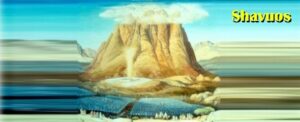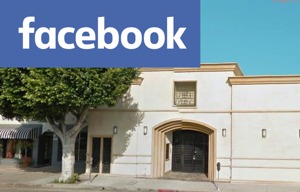SHAVUOS: A Brief Overview
I. Introduction
A. A Capsule Summary
B. The Importance of Shavuos Today
II. The Festival of Names
A. “The Time of the Giving of the Torah”
B. “The Day of the First Fruits”
C. “Festival of the Harvest”
D. “Atzeres”
E. “Festival of Weeks”
III. Shavuos Customs
A. Greenery and Flowers
B. Dairy Foods
C. Night-long Torah study (“Tikkun”)
D. Akdamus
E. The Book of Ruth
IV. Epilogue
Excerpted From:
Shavuos: Its Observance, Laws and Significance (Artscroll)
The Essence of the Holy Days: Insights From the Jewish Sages
Chabad Shavuos Guide
Timeless Patterns in Life
Jewish Literacy
To Be A Jew
1. INTRODUCTION
a. A Capsule Summary. Shavuos, one of the three major Festivals (the other two being Pesach and Sukkot), marks the giving of the Torah (i.e., both the written Torah which consists of the Five Books of Moses, the Prophets and the Writings, and the oral Torah which explains and clarifies the written Torah) to the entire Jewish people at Mt. Sinai over 3,300 years ago.
b. The Importance of Shavuos Today. Jewish holidays do not merely commemorate historical events, but also offer us the opportunity to re-live those events. Shavuos is a time for us to re-awaken and strengthen our relationship with Hashem by re-dedicating ourselves to the observance and study of Torah, thereby re-living the Revelation at Sinai.
2. THE FESTIVAL OF NAMES
A Festival of Many Names. No other Festival has as many names as Shavuos; it is referred to as:
a. “The Time of the Giving of Our Torah”
(1) The Torah As A “Gift”. R’ Shimon Schwab relates the word “giving” to the word “gift” since the Torah wasn’t merely “presented” or “given”, but was a special gift which created a profound and permanent impression upon the Jewish people and bound us to G-d and His Torah forever. In addition, the Talmud teaches that, just as Hashem gave Moshe the “gift” of Torah (for, despite Moshe’s greatness, it would have otherwise been impossible for him to master the Torah in 40 days and nights), He will ultimately grant the gift of Torah to anyone who strives diligently to learn it.
(2) “Giving” Rather Than Receiving”. Why isn’t Shavuos called “The Time of the Receiving of the Torah”? On the momentous day at Mt. Sinai, only the giving of the Torah occurred, whereas our receiving the Torah takes place every day. In addition, the Torah was given to all Jews alike, without distinction. However, the Torah has been received by each person differently, each according to his perception and level of understanding.
(3) Part of Our Essential Nature. The Revelation instilled in the Jewish people an everlasting desire to fulfill Hashem’s will — it became part of our “essential nature”. (The Talmud teaches that an angel teaches the entire Torah to a Jewish soul while it is in its mother’s womb; when the child is about to be born, the angel flicks it above the lip, causing it to forget what it has learned. The purpose of this pre-natal learning is to make the Torah, and the inclination towards its fulfillment, a part of the child’s essential nature.)
(4) Bridging the Chasm. The Lubavitcher Rebbe, zt’l, notes that the Revelation at Sinai marks a turning point in the spiritual history of the world. Before the Revelation, there was no possibility for union between the world’s material substance and spiritual reality; however, on Shavuos, two processes took place: (a) Hashem “descended” (i.e., the manifestation of G-dliness in the world); this process reached complete expression with the Giving of the Torah and the revelation of the Divine Presence in the Sanctuary; and (b) Man “ascended” to G-d (i.e., the refinement of man and his surrounding environment and the transformation of man and his world into vessels for G-dliness); this process began with Moshe’s ascent to Mt. Sinai and has never ceased.
(5) A Wedding Between Hashem And The Jewish People. The Revelation at Sinai is likened to a wedding between the Jews and Hashem, during which we became Hashem’s special nation and He became our G-d.
b. “The Day of the First Fruits”
On Shavuos, Shtei HaLechem (Two Loaves of bread baked from the first of the new wheat crop) were waved before the Altar.
c. “Festival of the Harvest”
This name represents the Two Loaves, as well as the gifts to the poor which the farmer must leave at harvest time. In Leviticus, the Torah juxtaposes the details of the Festivals with the admonition regarding gifts to the poor (“when you reap the harvest of your land, you shall not remove completely the corners of your field as you reap and you shall not gather gleanings of your harvest; for the poor and the proselyte shall you leave them; I am Hashem, you G-d”). From this juxtaposition, Chazal teach that one who leaves the required gifts for the poor is considered as if he had built the Temple and brought offerings upon its Altar (Rashi). The name also underscores that Shavuos is a time during which we thank G-d for bringing forth a bountiful crop.
d. “Atzeres”
Just as Shemini Atzeres is both an independent festival and a continuation and culmination of Succos, Shavuos is both an independent Festival and the continuation/culmination of Pesach (for the purpose of the Exodus was realized at giving of the Torah). “Atzeres” also means restriction; unlike all other Festivals, this is are specific mitzvos (e.g., such as shofar, succah, matzah) associated with Shavuos; the only mitzvah is the restriction from labor common to all Scriptural Festivals.
e. “Festival of Weeks”
Shavuos culminates the spiritual preparation of the seven-week Omer period which commenced on the second night of Pesach, during which the Jews prepared themselves for the giving of the Torah — “during this time they rid themselves of the scars of bondage and became a holy nation ready to stand before G-d” (Chabad Shavuos Guide).
3. SHAVUOS CUSTOMS
a. Greenery and Flowers.
i. Greenery. It is customary to decorate the synagogue and home with greenery in honor of Shavuos. This recalls: (a) Mt. Sinai, which was surrounded by foliage (Mishnah Berurah); (b) that Shavuos, when fruits begin to ripen, is a time of Heavenly judgment regarding the coming fruit harvest and therefore demands a heightened level of prayer (Mishnah Rosh Hashanah); and (c) Moshe’s miraculous rescue as an infant from the reeds of the Nile, which occurred on Shavuos.
ii. Flowers. It is also customary to prepare roses and other fragrant plants for Shavuos and to decorate the Torah scrolls with them (B’nei Yissochor). This recalls: (a) the verse in the Song of Songs that “like a rose among thorns, so is My beloved among the daughters” — i.e., when Hashem gazed upon the beautiful “rose” of Israel and heard them proclaim “we will do and [then] we will listen,” He declared, “In the merit of this rose, the orchard shall be saved. In the merit of the Torah and those who study it, the world will be saved.” (Song of Songs Rabbah 2:3); and (b) the reference in the Book of Esther that Haman, in his indictment of the Jews, told King Ahasuerus that the Jews are a nation who are forever occupied with their religious celebrations, “in the month of Sivan, they celebrate for two days . . . they call this festival Atzeres’ . . . they ascend to the roof of their synagogues where they spread roses and apples . . . and they say, this is the day on which the Torah was given to our ancestors'” (Targum Sheini).
b. Dairy Foods.
Shavuos is the only Festival on which there is a custom to also partake of dairy foods, especially on the first day. Among the explanations for this custom are the following:
i. A Biblical allusion. In Numbers, the Torah says “on the day of the first fruits, when you offer a new meal-offering to Hashem on your Festival of Weeks.” The initial letters of the Hebrew words for the underlined language form the word “chalav” (“milk”).
ii. Remembrance of the Two Loaves. According to Rama, this custom is a remembrance of the Two Loaves (i.e., we use a bread for the dairy part of the meal, followed by a second bread for the [separate] meat component of the meal).
iii. The Laws of Kashrus. The Ten Commandments encompass all 613 commandments. Thus, when the Jews returned to their tents after the giving of the Torah, they were bound for the first time by the laws of Kashrus. As a result, they didn’t couldn’t eat meat, since they first had to prepare a proper slaughtering knife, salt the meat, etc. Thus, it was necessary for them to eat dairy. (Mishnah Berurah)
iv. Moshe’s Sojourn on Mt. Sinai. The numeric value of “chalav” (“milk”) equals forty, corresponding to the forty days of Moshe’s sojourn on Mt. Sinai.
v. The Torah’s Power. The Torah is likened to “milk and honey”. Honey comes from a bee, which isn’t kosher, and milk comes from a live animal whose meat is forbidden until it is slaughtered. Both milk and honey, therefore, allude to Torah’s power to transform a soul into one of holiness and purity.
vi. Separation of meat and milk. In referring to the “first fruits”, the Torah juxtaposes the prohibition against “cooking a calf in its mother’s milk”, indicating that Shavuos corresponds to the prohibition requiring the separation of meat and milk. (Chidushei HaRim).
vii. Moshe’s Miracle. As noted above, Moshe was rescued from the Nile on Shavuos. The Talmud relates that Moshe would not nurse from the Egyptian wet nurses, causing Pharaoh’s daughter to give him over to his own mother, Yocheved, to nurse. The eating of milk foods on Shavuos commemorates this hidden miracle. (Yalkut Yitzchak)
viii. The sustenance of Torah. One of the miracles of childbirth is that a mother’s milk provides her newborn with all of its required nourishment. In this sense, Torah is like milk, for it encompasses within it all the sustenance that man’s soul needs for spiritual vitality and growth. (Imrei Noam)
c. Night-Long Torah Study (“Tikkun”).
In explaining this custom, Magen Avraham cites the Midrash that on the day Israel was to receive the Torah, the people overslept; as atonement for their having overslept and to show our zealousness to accept the Torah, the custom was adopted for Jews to study Torah all night long. R’ Tzadok cites Zohar which speaks of the “purification from Above” that is manifest on Shavuos, following the seven weeks of the counting of the Omer when the Jew strives to purify himself; all-night “immersion” in the waters of the Torah allows us to experience this gift of purity.
d. Akdamus.
Akdamus, the liturgical poem proclaiming Hashem’s greatness is read as an introduction to the reading of the Ten Commandments on the first morning of Shavuos. Akdamus is an inspiring hymn, written in Aramaic, which praises Hashem. It was composed by Rabbi Meir ben Yitzchak, who lived in Worms, Germany, during the 11th Century. To highlight one particular aspect of Akdamus, it is interesting to note that, in Chassidic circles, the following verses from Akdamus are sung to a heartfelt tune: “But His precious inheritance’s lot is dearer, for with permanence, they made Him their sole desire, at sunrise and sunset.” In its plain meaning, this passage refers to the morning and evening recitation of the Shema. On a deeper level, says R’ Avraham of Slonim, the terms “sunrise” and “sunset” allude to the varying spiritual states in which a Jew finds himself as he struggles with the rigors of life — at times, he experiences “sunrise” (a period of spiritual ascent when he perceives a closeness with Hashem and enjoys success in moments of challenges); at other times, he experiences “sunset” (moments during which the challenges are difficult and may seem insurmountable, and the sweet taste of spiritual elevation is elusive). A Jew must learn to serve Hashem with permanence — whether in periods of light or darkness, one must remain steadfast in his service of Hashem, strengthened by the knowledge that Hashem knows of his distress and is with him even when His providence is not apparent. This message, says Nesivos Shalom, is inherent in the Talmudic teaching that prior to the giving of the Torah, the Jews declared “we will do and [then] we will listen”.
e. The Book of Ruth.
It is also customary to read the Book of Ruth on the second day of Shavuos. A number of reasons are offered for this custom:
i. Connection to the harvest. As noted above, Shavuos is called the Festival of the Harvest; Ruth entered Israel at the beginning of the barley harvest and married Boaz at the conclusion of the barley and wheat harvests.
ii. Gifts For the Poor. As noted above, Shavuos is a reminder of one’s obligations to the poor during the harvest season; it was when Ruth, who was both poor and a proselyte, went to gather the grains left for the poor that she and Boaz first met.
iii. Kindness. The Book depicts the kindness of Ruth [and Boaz]; the Torah itself is called in Proverbs the “Torah of kindness” (Roke’ach). Other than references to the laws of conversion and transferring property, the Book of Ruth contains no laws — however, the Torah places as great an emphasis on mitzvos between man and his fellow man as it does on mitzvos between man and Hashem; thus, Ruth’s kindness (and her subsequent reward of being mother to the House of David) illustrates the great emphasis the Torah places on one’s behavior towards his fellow man. To further emphasize this point, R’ A. Henach Leibowitz notes that Boaz greeted Ruth with admiration for (in the order listed): (a) her kindness to her mother-in-law; and (b) the fact that she left her regal status in her homeland for a life of hardship and poverty as a converted Jew. This unlikely order (i.e., the second attribute seems to be superior) teaches us the value of kindness performed with perfection, for kindness is the hallmark of Hashem and our kindness is the greatest emulation of Hashem that we can achieve.
iv. Sacrifice for Torah. Just as Ruth left her homeland where she had been a princess to live in abject poverty as a Jew in Israel, one must be prepared to undergo material sacrifice and deprivation in order to truly attach to the Torah. (Yalkut Shimoni)
v. One Should Not Be Deterred by Obstacles To Torah. Just as Ruth overcame obstacles in achieving her goals of converting to Judaism, coming to Israel and marrying Boaz, so too must each Jew not allow any difficulty to prevent him/her from clinging steadfastly to Torah and immersing him/herself in its study. (Yalkut Me’am Loez).
vi. A Covenant With Hashem. Through her conversion, Ruth entered into a Covenant with Hashem; on Shavuos, the Jews entered into their Covenant with Hashem through their acceptance of the Torah. (Machzor Vitri) (Interestingly, the numerical value of “Ruth” is 606; combined with the 7 Noahide laws she was obligated to observe prior to her conversion, the numerical value is 613 [the number of commandments contained in the Torah].)
vii. Mother of Royalty. The final verse of the Book records the birth of David, the great-grandson of Ruth and Boaz; the Talmud Yerushalmi states that David was born and died on Shavuos.
viii. Woman of Valor. Ruth, who became the Mother of Royalty, represents the spiritual striving and accomplishments of Jewish women. (As Rabbi Akiba said to his disciples when referring to his dedicated wife, “what is mine and what is yours is hers”.)
4. EPILOGUE — Excerpted from an article by Michael Medved, entitled Forgotten Festival’s Revealing Message.
I had a terrible time trying to inform skeptical business associates about the major two-day Jewish holiday that place this week. When I told the publicity director of a movie company that I would have to miss an important screening because it conflicted with the festival of Shavuos, he seemed genuinely perplexed. Oh, yeah, now I remember that one,’ laughed the publicist, who happens to be Jewish. It’s the holiday that listed right up there with Sandy Koufax’s birthday.’ As a matter of fact, Shavuos is one of the most significant days of the entire Jewish year, equal in importance to Passover, and a much higher priority than celebration of the universally recognized holiday of Hanukkah. Why, then, does Shavuos pass all but unnoticed by most Jews and all gentiles? It seems to be the unfashionable theme of the Holiday. Shavuos recalls G-d’s revelation of absolute truth on Mt. Sinai and renews the Jewish people’s acceptance of G-d’s law.
This emphasis on permanent rules that originate with a higher power makes many people uncomfortable and leaves the Holiday unpopular. Passover is a favored festival not only because of the pleasing traditions of the Seder but also because of the underlying idea of a “celebration from freedom” and an escape from bondage appeals powerfully to our modern sensibilities. Hanukkah is widely observed due to the fact that it roughly coincides with Christmas, but also thanks to an inspiring tale of rebel idealists fighting a successful battle against an alien tyrant.
Shavuos, on the other hand, highlights those elements of organized religion that secular people resent most: its stress on rules, restrictions and absolute standards of conduct. Today’s conventional wisdom tells us to “follow our hearts” — to enshrine instinct and reject any sense of structure or system of values imposed from the outside.
I recall a recent conversation with an old friend who expressed astonishment at the way that Jewish tradition placed demands on its adherents. All of those do’s and dont’s — it would drive me crazy to deal with rules regulations for every little detail of my life.’ Ironically, this same friend had just completed the Pritikin diet; earlier in that same conversation, he had been proudly describing the strict way he followed the program’s prescriptions on what to eat, how to sleep, daily exercise or how to handle stress. I told him that with this detailed and demanding regimen, he seemed at least as rule bound as any believer. But there is a big difference,’ he insisted. I do Pritikin for my own good. I actually get something out of it. When you’re religious, you do the rituals just to please G-d.’
I’m always amazed at the number of secular Americans who fail to understand that religious people — Christians, Jews, Muslims and others — also “get something out of the patterns around which they’ve organized their lives. I’m convinced that most of those who commit themselves to church or synagogue does so for selfish, practical reasons: participation in a religious community makes life richer, better, deeper. The message of Shavuos is that the Torah is a gift, not a burden. The Torah is a time-tested, reliable guide to improving your life; applying its rules is ultimately up to you. That’s why this Holiday celebrates the human willingness to accept the law as much as it celebrates G-d’s willingness to give it.
This forgotten festival should assume a far more prominent role in American religious life. It is, in fact, even more meaningful than Sandy Koufax’s birthday.
Have a Wonderful Shavuos!




 Visit the group and request to join.
Visit the group and request to join.
